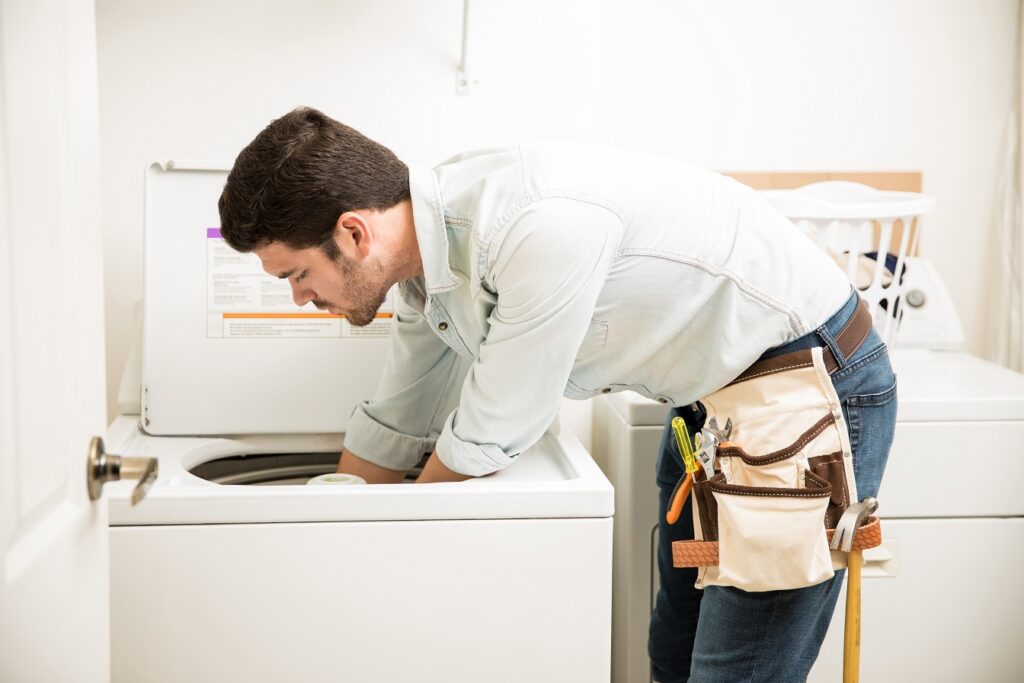- Smart Watch Payments and Digital Wallets in the Philippines - June 8, 2023
- Front-Load vs. Top-Load Washing Machines - May 25, 2023
- Pros And Cons Of Wireless Charging Power Banks - May 10, 2023
Last Updated on
Do you find yourself confused when you enter the laundry aisle at your local department store? Washers with front-loaders and top-loaders, washing machines that use a variety of technologies – how do you choose which one is right for your home? In this blog post, we’ll break down the differences between front-loading and top-loading washing machines. We’ll also compare their cost, efficiency, and other factors to help you make an informed decision. So let’s get started!
When it comes time to buy a new washing machine, many homeowners may wonder what all the fuss is about when it comes to choosing between a front-loader or top-loader. There are pros and cons to both types, so it is important to evaluate the different models and decide which type best suits your needs. In this blog post, we will answer all your questions about front-loading vs top-loading washing machines.
What is a Front-loading Washing Machine?
Front-loading washing machines are the most common type of washer found in American homes these days. This style features a door for loading clothes at the front of the machine and there is no need to manually add water – instead, it draws water from your main plumbing system through an external hose or valve. It then uses gravity to spin wet laundry around in its large drum before draining the used water into a separate drain line. The advantage of this design is that it uses less water and energy than other styles.
What is a Top-loading Washing Machine?
Top-loading washing machines are the traditional style of washers and can be found in many homes as well. They feature a top lid for loading clothes, which makes them easier to use since you don’t have to bend down to load or unload. This type of washer also requires manual filling with water from an external hose or valve. It relies on an agitator inside the drum to spin wet laundry around before draining the used water into a separate drain line. The back-and-forth motion of the agitator can sometimes be too much for delicate fabrics, so if you plan on washing delicate items, you may want to choose a different type of washer.
Advantages and Disadvantages of Front-loading Washing Machines
Pros:
Front-loading washing machines are much more efficient than top-loaders when it comes to both water and energy usage. They also require less detergent since the clothes are spun more quickly. Additionally, front-loading washers have larger capacity drums so you can wash more clothing in one load which will save time on laundry day! They are also gentler on fabrics due to their low spin speed, making them better for washing delicates.
Cons:
The downside is that front-loaders tend to be more expensive than top-loaders and the doors may be heavier and harder to open. The drums are also more prone to collecting mildew or mold if not dried properly after each use. Additionally, due to their low spin speed, clothes may take longer to dry after a wash cycle.
Advantages and Disadvantages of Top-loading Washing Machines
Pros:
Top-loading washing machines are typically less expensive than front-loaders and they have larger capacity drums that can hold more clothing in one load. They are also easy to use since you don’t need to bend down when loading or unloading them. Finally, the agitator design allows for a faster spin speed so laundry will be dryer after a wash cycle.
Cons:
The downside to top-loaders is that they are much less efficient when it comes to water and energy usage, so your utility bills may be higher if you use one of these machines. They can also be hard on fabrics due to the back-and-forth motion of the agitator. Finally, more detergent is needed since the clothes aren’t spun as quickly.
Cost and Efficiency Comparison
Now that we’ve looked at the pros and cons of each type of machine, let’s compare their costs and efficiency levels:
Initial Cost: Front-loading washing machines typically cost more than top-loaders.
Operating Cost: Front-loaders are much more efficient when it comes to water and energy usage, so your utility bills will be lower if you use one of these machines.
Water Usage: Front-loaders use much less water than top-loaders, saving you money on your water bill.
Energy Usage: Front-loaders also use less electricity or gas than their top-loading counterparts, so your energy bills should be lower as well.
Conclusion
When it comes to front-loading vs top-loading washing machines, both have their advantages and disadvantages. Front-loaders tend to cost more initially but they are much more efficient when it comes to water and energy usage.
Top-loaders are more affordable but use more water and electricity, making them less efficient in the long run. Ultimately, the decision comes down to your budget and needs. If you’re looking for an affordable option with larger capacity drums, a top-loader may be right for you. But if efficiency is most important to you, a front-loader may be the better choice. Whichever type of machine you choose, it is important to clean it regularly so that it remains both efficient and effective at washing your clothes.

